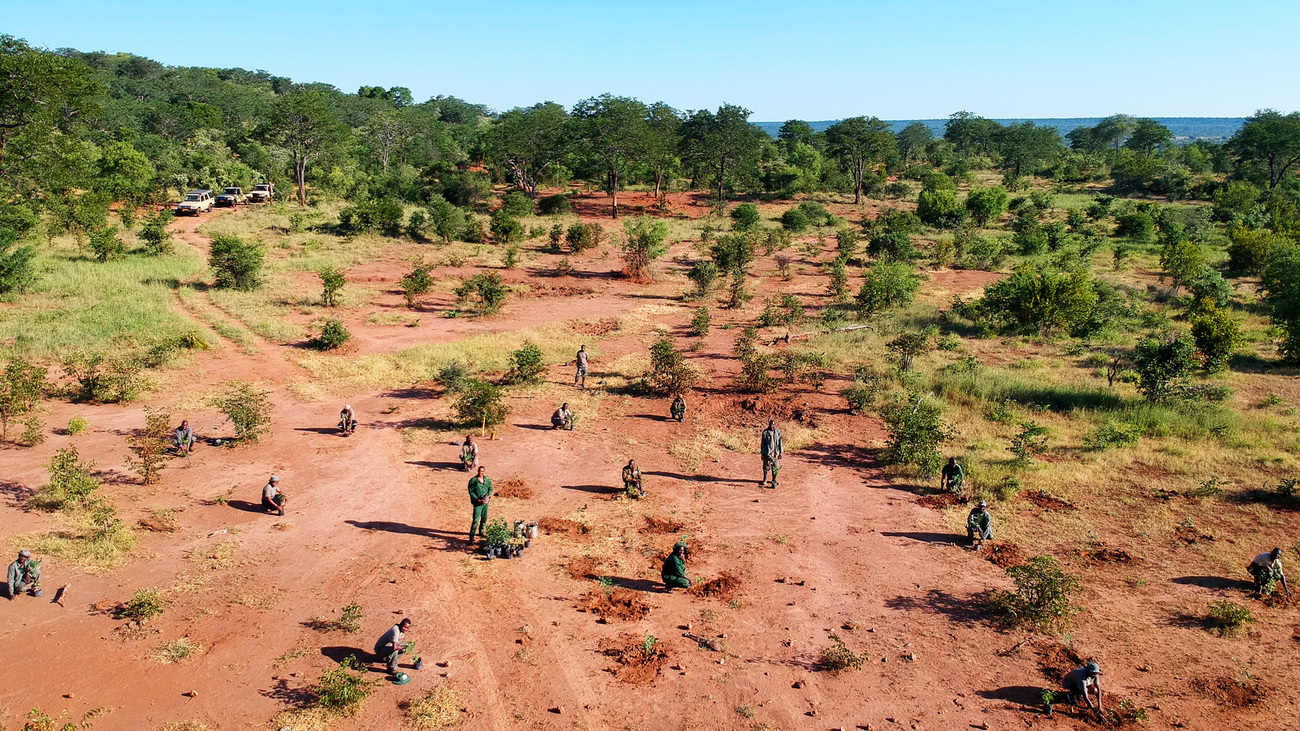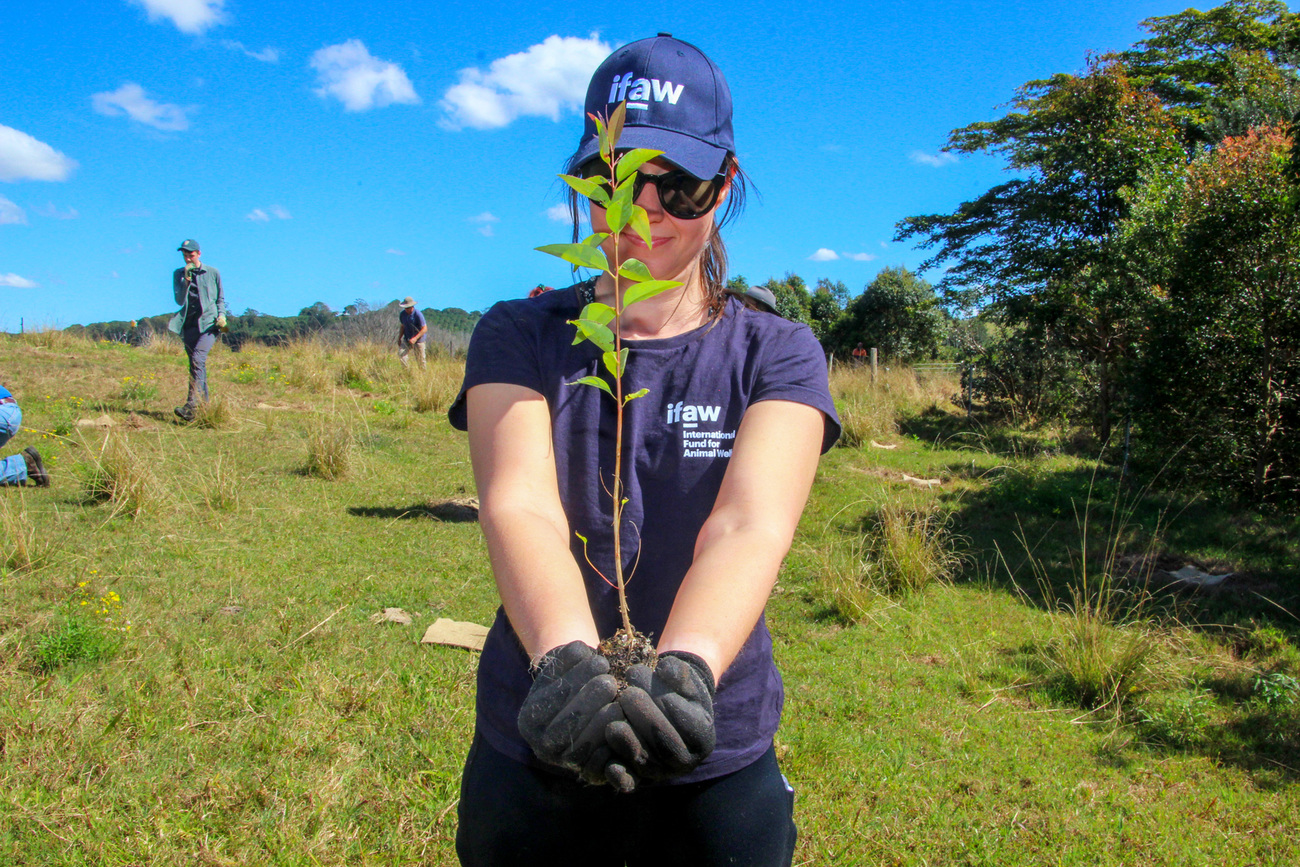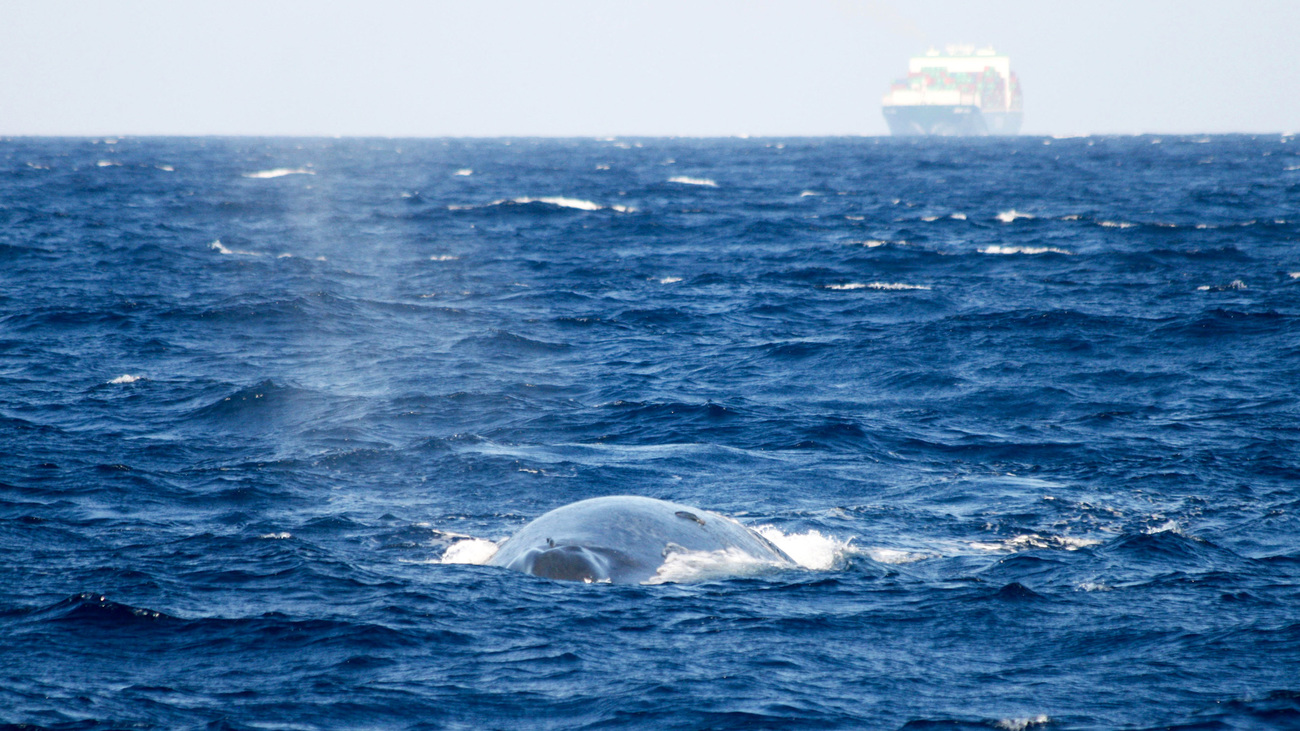Climate change mitigation vs. adaptation: What’s the difference?
Climate change mitigation vs. adaptation: What’s the difference?
Climate change is undeniably one of the biggest and most urgent threats to our planet. Global atmospheric warming has already hit 1.5 degrees Celsius above pre-industrial temperatures and is currently predicted to reach 3.0 degrees by the end of the century. This will have catastrophic impacts on animals, biodiversity and people. The impact that climate change is already having on animals and people means we need to build resilience to climate shocks and stress—for both animals and communities–and to support them to adapt to the rapidly changing conditions.

As a global non-profit that works to protect animals and their habitats, IFAW has spent over 55 years making significant contributions to reducing the impacts of the climate crisis around the world. We believe—and have seen firsthand—that the most effective ways to limit, reverse, and adapt to global warming is by implementing two key strategies: climate change mitigation and climate change adaptation. Here’s why.
What is climate change mitigation?
Put simply, climate change mitigation refers to all actions taken to slow down—and ideally reverse—the effects of climate change. The goal is to reduce the amount of greenhouse gases—a gas that traps heat and makes the earth warmer—emitted into the atmosphere to stop the warming of our planet. But how do we do that?
Climate change mitigation is urgently needed and must be implemented much faster than it currently is in order to ensure that we avoid the worst possible impacts, and safeguard a safe and healthy future for animals, children, and future generations.
Examples of climate change mitigation
There are already a number of established practices in the realm of climate change mitigation. Let’s take a look at a few.
Reducing emissions of greenhouse gases
According to the Intergovernmental Panel on Climate Change—a United Nations body—the best way to avoid runaway global warming and all its negative effects is to deliver rapid decarbonisation and achieve net zero emissions by 2050. Under the terms of the United Nations Framework Convention on Climate Change, governments around the world are legally obligated to reach net-zero emissions.
- Replacing greenhouse gas-emitting fossil fuels with clean, renewable energies: Instead of using coal, oil, and natural gas, we must switch to more sustainable energy sources, such as solar, wind, and geothermal.
- Replacing traditional internal combustion vehicles with electric options: Gas and diesel cars produce and release a lot of carbon dioxide into the atmosphere. Switching to electric vehicles (EVs) would reduce these emissions. We must also power EVs from renewable energy sources, reducing pollution from both cars and power plants.
- Retrofitting old buildings to make them more energy efficient: Older buildings often waste a lot of energy, as they were built before we had smart building techniques. By improving insulation, updating windows, and using energy-efficient heating and cooling systems, we can reduce the amount of energy they use.
- Reducing carbon and methane emissions in agriculture: This includes:
- Reducing nitrogen fertiliser and pesticide use
- Shifting to organic and regenerative farming
- Integrating trees into farms through agroforestry
- Reducing industrial livestock farming
- Improving waste management
- Soil carbon sequestration
- On-farm energy efficiency
- Shifting to renewable energy
- Crop diversification
- Reducing land use change and deforestation
Increasing capture and storage of greenhouse gases in natural systems
- Planting trees and preserving forests: Trees are a natural air filter, which absorb carbon dioxide from the air and store it as they grow. Planting more trees and protecting existing forests helps remove carbon dioxide from the atmosphere, in turn slowing down global warming.
- Advocating for wildlife conservation: Supporting wildlife and their habitats maintains the crucial ecosystem services we need to survive and also supports the carbon cycle and sequestration. Many critical areas for wildlife exist within wider, interconnected landscapes, including community lands. Such areas need to be managed effectively—by harvesting rainwater and recharging aquifers, planting trees, using regenerative farming and permaculture, favouring agroforestry, and taking a holistic approach to rangeland management—to protect them into the future.
- Protecting the ocean: Did you know that 50% of the oxygen you breathe comes from the ocean? This is because phytoplankton, through photosynthesis, take in carbon dioxide and produce oxygen, like plants. These tiny marine organisms are fed by the faeces of whales, which shows just how much of an impact all marine life—from the smallest ocean inhabitants to the largest—has on the health of our planet. In addition, it’s important that we protect habitats like coral reefs, which not only serve as homes for many animals but also provide a barrier against storms and floods.

What is climate change adaptation?
While climate change mitigation is about addressing the problem head-on, climate change adaptation involves learning to adjust to the effects of climate change. It’s undeniable: the Earth’s climate is changing. We need to adjust our lives and environments to handle new weather patterns, rising sea levels, and other changes that result from climate change. This is especially urgent for the most vulnerable communities, people, and wildlife—those who are most at-risk due to climate change.
Climate change adaptation can be implemented on all scales. It refers to how a country or community, an industry like agriculture, or an ecosystem and its wildlife are adapting to climate change.
Examples of climate change adaptation
The reality of our warming planet is inescapable. While we try to curb the rising temperatures, these are some examples of how we must adapt to the new reality.
- Building sea walls, elevating infrastructure, or retreating from low-lying coastal areas altogether: These actions help protect people and buildings from rising sea levels and storm surges. Elevating infrastructure means building roads, bridges, and houses higher up to avoid water damage. Where that isn’t possible, sea walls act as barriers to keep the ocean from flooding the land. In some cases, people might need to move away from areas that are too close to the sea.
- Reducing and recycling water use: Climate change is causing more frequent and severe droughts, which means there’s less water available. By using water more efficiently and recycling it, we can ensure there’s enough for everyone. This includes things like fixing leaky pipes, using low-flow toilets and showerheads, and collecting rainwater for gardening.
- Using prescribed fires to prevent uncontrollable wildfires: Not all fires are bad. In fact, some ecosystems need to experience regular fires to thrive. Prescribed fires are small, controlled fires started and managed by experts, which help clear out dead plants that could fuel larger, more dangerous wildfires. They’re essential for preventing uncontrollable fires that may pose serious threats to the lives of humans and wildlife.
- Favouring drought-tolerant crops: As the climate changes, some areas may become drier and less suitable for traditional crops. Thankfully, some crops are extra hardy and thrive in times of drought. By growing plants that need less water and can handle dry conditions better, farmers can still produce food even during droughts. Examples of drought-tolerant crops include certain types of beans, millet, and sorghum.
- Landscape conservation: We need to fight against deforestation and land clearing. Protecting natural areas like forests, wetlands, and grasslands is very important for climate change adaptation. These landscapes act as carbon sinks, meaning they absorb more carbon dioxide than they release. Mitigation efforts also include creating parks and establishing wildlife habitats in vulnerable areas.
- Marine conservation: Likewise, we need to enact policies to protect our ocean. The ocean takes up 71% of the Earth’s surface, but much of it is unprotected. Learn more about the High Seas Treaty and how IFAW is working to ensure the entire ocean is safe from detrimental human impact.

Why climate change mitigation and adaptation are both important
Both climate change mitigation and adaptation are important because they address different parts of the climate change problem. One strategy isn’t better than the other. In fact, neither would be sufficient by itself.
Mitigation and adaptation need to work hand-in-hand to protect our planet and our way of life. On one hand, mitigation focuses on reducing the amount of greenhouse gases we release into the atmosphere. We’re trying to slow down global warming and prevent further climate change.
Meanwhile, adaptation is about tangible, actionable solutions that will help us in the short term while our mitigation strategies come into effect. They’re just as important, as they protect communities and ecosystems from the changes we can’t prevent.
Climate change mitigation and adaptation are also important to climate justice. Realistically, not every country can invest the same amount of capital and resources into climate change mitigation and adaptation strategies. More affluent countries should be investing heavily in mitigation strategies, as they have the resources to do so, while countries with smaller economies work on small-scale, local adaptation tactics.
Effective climate action requires both preventing further damage and preparing for the inevitable changes to come. And let’s not forget: although mitigation and adaptation are both necessary now, the less we choose to mitigate today, the more adaptation we’ll need to do later down the line.
IFAW’s climate work
At IFAW, we’re well aware of the benefits of using both climate change mitigation and adaptation strategies to fight the effects of our warming planet. We see firsthand the damage that climate change inflicts on ecosystems and wildlife, and we’re dedicated to working as hard as possible to reverse it.
The three pillars of our climate work are adaptation, mitigation, and addressing loss and damage. Let’s take a look at some of the climate projects we have completed or are currently running.
Climate-smart conservation
We acknowledge that climate change has already affected—and is still affecting—animals and their habitats across the globe. This means that our plans need to factor in these changes and ensure this flora and fauna is resilient enough to adapt to what’s still to come.
This involves working with conservation agencies, governments, and local communities to ensure they understand the risks of climate change and the importance of conservation management plans. For example, in Africa, IFAW is working to ensure that elephants and other animals have access to water during elongated drought periods brought on by climate change.
Integrated landscape management
Ecosystems are more intertwined than we often realise. For example, higher winter temperatures in the mountains may impact alpine creatures directly, but will also affect water sources for mammals living thousands of kilometres downriver.
Through IFAW’s Room to Roam initiative in Africa, we’re working with local conservation agencies to ensure the presence of safe wildlife corridors for roaming and migratory animals, including elephants. We’re aiming to connect core elephant populations from Zimbabwe to Kenya, keeping them away from human populations and increasing the animals’ long-term resilience.
Wildlife rescue
Sadly, the reality of climate change is that weather events and warming patterns are directly jeopardising the lives of animal populations. This is why disaster response and animal rescue are key to IFAW’s wildlife conservation approach .
We have airlifted an orphaned elephant calf in Zimbabwe and rebuilt koala habitats following devastating bushfires in Australia. We’ve also responded to floods, wildfires, hurricanes, earthquakes, and other disasters around the globe. Building resilience is key to our disaster response work—not only are we responding in wake of disasters, but we’re also helping communities prepare for them before they happen.

Wildlife crime
Poaching and other types of wildlife crime pose a very real threat to the biodiversity of our planet. Wildlife trafficking removes animals from their wild populations and sometimes become displaced into a different ecosystem, potentially harming other species, and when species are high in demand, their own populations can become depleted. Some species that are targeted include keystone species, like elephants, sharks, and jaguars, whose ecosystems rely on them.
IFAW works to combat illegal wildlife trade and poaching, and we collaborate with law enforcement and other organisations to protect wildlife from these crimes.
We have led successful efforts to rescue animals from the illegal pet trade and have been involved in game-changing policy restructure to protect animals that are frequent poaching victims.
Marine conservation
Helping to protect marine life is a huge part of what we do at IFAW. Currently, we’re working to protect the last remaining North Atlantic right whales, a species which is key to carbon sequestration and helps maintain balance in their ecosystems. In addition, we are advocating for shipping companies in the Mediterranean to redirect their shipping lanes away from endangered whales—so far, seven companies have signed on.

Policy
Effecting change isn’t just about physically protecting animals, but ensuring they have adequate legal protections, too. IFAW is committed to working at a policy level, representing animals that are endangered and can’t speak for themselves.
And it’s working. In recent years we have shut down ivory markets in the U S, the U K, and China to limit elephant poaching. We’re currently lobbying the US Congress to pass a bill that would see dangerous fishing gear replaced with ropeless alternatives, which would reduce collateral damage during commercial fishing.
Of course, we’re advocating in the realm of climate change mitigation and adaptation, too, pushing for more financial investment and the recognition of wildlife conservation. Read our new report on the role of wildlife conservation and ecosystem protection in addressing the climate crisis.
Working with communities
IFAW is also committed to ensuring that communities highly susceptible to the impacts of climate change are ready to protect themselves, their land, and their livelihood.
Poverty and food insecurity can drive people to engage in activities like poaching, overfishing, and deforestation. These issues heighten when communities face climate-related disasters.
This is why we have a responsibility to help communities become more resilient to the challenges they face as a result of climate change and adapt to climate- and wildlife-friendly livelihoods that don’t rely as much on natural resources.
We work to provide disaster risk management and career training to at-risk communities, allowing them to generate sustainable incomes for their families.
The problem of climate change is urgent and complicated. These life-saving climate mitigation and adaptation strategies can only be achieved with your help. Learn how you can get involved and take action for the planet.
Related content
Every problem has a solution, every solution needs support.
The problems we face are urgent, complicated and resistant to change. Real solutions demand creativity, hard work and involvement from people like you.